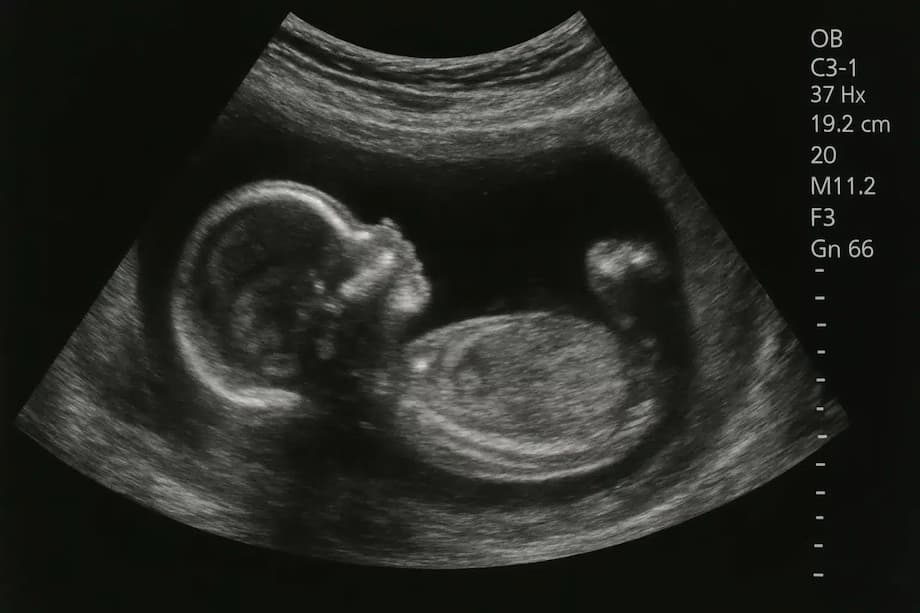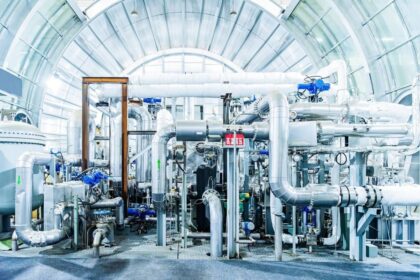China’s Humanoid Pregnancy Robot: A Technological Leap or Ethical Minefield?
In a move that has captured global headlines and ignited fierce debate, a Chinese technology company is racing to develop the world’s first humanoid robot equipped with an artificial womb capable of carrying a pregnancy from conception to birth. The project, spearheaded by Guangzhou-based Kaiwa Technology, aims to deliver a working prototype by 2026, with an estimated price tag of around $14,000—far less than the cost of traditional surrogacy in many countries. If successful, this innovation could fundamentally reshape the landscape of human reproduction, infertility treatment, and even the definition of parenthood.
- China’s Humanoid Pregnancy Robot: A Technological Leap or Ethical Minefield?
- What Is the Humanoid Pregnancy Robot?
- Why Is China Pursuing Artificial Wombs?
- Scientific Hurdles: How Close Are We to Full Artificial Gestation?
- Ethical and Legal Dilemmas: Who Is the Parent?
- Public Reaction: Hope, Skepticism, and Fear
- Global Context: Artificial Wombs and the Future of Reproduction
- What Happens Next?
- In Summary
But as the science edges closer to reality, the ethical, legal, and social questions are multiplying just as quickly. Is this the dawn of a new era in reproductive technology, or are we venturing into uncharted—and potentially perilous—territory?
What Is the Humanoid Pregnancy Robot?
The concept, unveiled at the 2025 World Robot Conference in Beijing, is as audacious as it is controversial. Kaiwa Technology’s founder, Dr. Zhang Qifeng, describes a life-sized humanoid robot with an artificial womb embedded in its abdomen. This artificial uterus is designed to mimic the natural environment of human gestation, using artificial amniotic fluid and a nutrient delivery system to support fetal development over a full ten-month pregnancy. The robot would ultimately deliver a baby, offering an alternative to biological pregnancy for those unable or unwilling to carry a child themselves.
According to Dr. Zhang, the core artificial womb technology has already been tested in laboratory settings, primarily with animal models. The next challenge is integrating this system into a humanoid robot that can interact with humans and manage the complex process of gestation autonomously.
How Does the Technology Work?
The artificial womb is designed to replicate the key functions of a human uterus:
- Artificial Amniotic Fluid: The fetus would develop in a fluid-filled chamber, closely mimicking the protective environment of a natural womb.
- Nutrient and Oxygen Delivery: A hose system would supply nutrients and oxygen, similar to the umbilical cord’s role in natural pregnancy.
- Temperature and Environment Control: The robot would regulate temperature, humidity, and other environmental factors to optimize fetal development.
While these features sound futuristic, they build on decades of research into neonatal incubators and partial artificial wombs. The most notable precedent is the 2017 “biobag” experiment at the Children’s Hospital of Philadelphia, where premature lambs were successfully nurtured in a synthetic womb for several weeks. However, that technology only supported fetuses partway through gestation, not from fertilization to birth.
Dr. Zhang claims that Kaiwa’s system will be the first to support the entire process—from fertilization and implantation to full-term delivery. Yet, many experts caution that the leap from animal models and partial gestation to complete human pregnancy is enormous, both scientifically and ethically.
Why Is China Pursuing Artificial Wombs?
China’s interest in artificial womb technology is driven by a confluence of demographic, social, and technological factors. The country is facing a rapidly aging population and a declining birth rate, with infertility rates rising from 12 percent in 2007 to 18 percent in 2020. Economic pressures and shifting social attitudes have led many women to delay or forgo childbirth, while surrogacy remains illegal under Chinese law.
Dr. Zhang has been candid about the motivations behind the project. In an interview with Newsweek, he explained:
“Some people don’t want to get married but still want a wife; some don’t want to be pregnant but still want a child. So one function of our robot wife is that it can carry a pregnancy.”
By offering a technological alternative to surrogacy and traditional pregnancy, Kaiwa Technology hopes to address both the personal desires of would-be parents and the broader demographic challenges facing China.
This push is part of a larger trend in Chinese innovation, where robotics and artificial intelligence are being harnessed to solve complex societal problems. At the same World Robot Conference, researchers also introduced GEAIR, an AI-powered robot designed to accelerate crop breeding and boost food production—demonstrating the country’s ambition to merge biology and robotics across multiple domains.
Scientific Hurdles: How Close Are We to Full Artificial Gestation?
Despite the bold claims, the scientific community remains deeply skeptical about the feasibility of a fully autonomous pregnancy robot in the near future. While artificial wombs have shown promise in supporting premature animals, replicating the entire process of human gestation is a vastly more complex challenge.
Partial Ectogenesis vs. Full Artificial Wombs
Current artificial wombs function more like advanced incubators, supporting life only after partial gestation. The 2017 biobag experiment, for example, allowed lambs at the equivalent of 23–24 weeks of human gestation to survive and develop for several weeks. However, these systems do not handle fertilization, implantation, or the earliest stages of embryonic development.
Full ectogenesis—the ability to grow a human baby from fertilization to birth entirely outside the body—remains theoretical. Key challenges include:
- Implantation: Successfully attaching a fertilized embryo to the artificial womb lining, a process that is still poorly understood even in natural pregnancies.
- Placental Function: Replicating the placenta’s complex role in nutrient exchange, hormone production, and immune regulation.
- Hormonal and Immune Interactions: Mimicking the intricate hormonal signals and immune protections provided by a human mother.
- Long-Term Safety: Ensuring that children born from artificial wombs are healthy, both physically and mentally, over the long term.
Dr. Yi Fuxian, an obstetrician and demographer at the University of Wisconsin–Madison, told Newsweek:
“Pregnancy is an extremely complex process, with each step being extremely delicate and critical. The robot is likely just a gimmick and there are many health and ethical risks even if it could ultimately bring a child to term.”
Other experts point out that even the most advanced animal studies have not achieved full-term gestation from fertilization, and that human pregnancy involves unique biological processes that are not easily replicated by machines.
Ethical and Legal Dilemmas: Who Is the Parent?
The prospect of humanoid robots carrying human babies raises profound ethical and legal questions. Among the thorniest issues:
- Parenthood and Legal Status: If a child is gestated in a robot, who is recognized as the legal parent? The genetic donors? The robot’s owner? The company that built the robot?
- Rights of the Child: What rights would a child born from a machine have, and how would their status be determined under existing laws?
- Emotional and Social Bonds: Can a robot replicate the emotional connection between a mother and fetus, and what are the psychological implications for children born this way?
- Commodification of Reproduction: Does the technology risk turning childbirth into a transactional, commercial process, or even a “production line of cheap babies,” as some critics warn?
- Potential for Abuse: Could artificial wombs be misused for human trafficking, genetic selection, or other unethical purposes?
Dr. Zhang has acknowledged these concerns and says that Kaiwa Technology is working with authorities in Guangdong Province to develop ethical and legal guidelines. Policy proposals have already been submitted, but no clear regulatory framework exists yet. In China, current law prohibits growing embryos in artificial wombs beyond two weeks, reflecting global caution around the technology.
Internationally, the debate is equally heated. In Israel, for example, robotic surrogacy is illegal, and strict laws govern embryo research and genetic modification. Any move toward artificial wombs would require extensive public, medical, and legal debate.
Public Reaction: Hope, Skepticism, and Fear
The announcement of the pregnancy robot has triggered a wave of reactions on Chinese social media and beyond. On platforms like Weibo, the news quickly became a trending topic, with opinions ranging from excitement about new options for infertile couples to deep unease about the implications for society.
Supporters hail the technology as a breakthrough for those unable to conceive or carry a pregnancy, potentially freeing women from the health risks and burdens of childbirth. They argue that artificial wombs could democratize access to parenthood and advance reproductive rights.
Critics, however, warn of a host of dangers—from undermining the maternal bond to enabling the commodification of human life. Some medical experts argue that the emotional and hormonal interplay between mother and fetus is essential for healthy development and cannot be replicated by machines. Others fear that the technology could be misused for eugenics or create new forms of inequality.
Joseph Dube, head of marketing at KraneShares, described the public’s reaction to a humanoid robot demonstration in New York:
“I feel like I was witnessing firsthand the first lightbulb or the first car. People were amazed. Some people were terrified. It was a major mixed bag of reactions.”
Even among scientists, there is debate about whether the project is a genuine leap forward or more of a publicity stunt. Some point to the lack of transparency about how fertilization and birth would actually work, and the absence of published data on human trials.
Global Context: Artificial Wombs and the Future of Reproduction
China is not alone in exploring artificial womb technology. Research teams in the United States, Europe, and Israel are also working on advanced incubators and partial ectogenesis systems, primarily aimed at improving outcomes for extremely premature infants. The EXTEND system in the U.S., for example, has shown promise in supporting fetal development in lambs and pigs, with human trials for super-premature babies potentially on the horizon.
However, no group has yet achieved full-term gestation from fertilization to birth in animals, let alone humans. Most current research focuses on supporting fetuses at the edge of viability—typically equivalent to 22–24 weeks of human gestation—where survival rates are lowest with current neonatal intensive care.
The global market for artificial womb technology is already valued at $1.5–2.2 billion and is projected to grow as innovations in neonatal care and fertility treatments advance. If full artificial gestation becomes possible, the implications for society, medicine, and law will be profound.
Potential Benefits
- Infertility Treatment: Artificial wombs could offer new hope to couples struggling with infertility or medical conditions that make pregnancy risky.
- Reducing Maternal Health Risks: Women could avoid the physical dangers of pregnancy and childbirth, including complications like preeclampsia or gestational diabetes.
- Scientific Research: Controlled artificial gestation could enable detailed study of pregnancy complications, genetic disorders, and maternal-fetal interactions.
- Demographic Solutions: Countries facing declining birth rates could use the technology to boost population growth.
Risks and Concerns
- Ethical and Social Disruption: The technology could challenge traditional family structures, gender roles, and the meaning of motherhood.
- Legal Uncertainty: Existing laws may not be equipped to handle questions of parenthood, inheritance, and the rights of children born from machines.
- Health and Safety: Long-term effects on children born from artificial wombs are unknown, and failures could have catastrophic consequences.
- Potential for Inequality: Access to the technology could be limited by cost or regulation, exacerbating social divides.
What Happens Next?
Kaiwa Technology’s pregnancy robot remains, for now, a bold experiment. The company expects to unveil a prototype within a year, but significant scientific, regulatory, and societal hurdles remain before the technology could see widespread adoption. Even if the artificial womb functions as intended in animals, moving to human trials would require rigorous testing, ethical oversight, and likely years of additional research.
Meanwhile, the debate over artificial wombs is likely to intensify as advances in biotechnology and robotics continue to blur the boundaries between science fiction and reality. As Dr. Zhang and his team push forward, the world will be watching—not just to see if the technology works, but to grapple with the profound questions it raises about the future of human life.
In Summary
- China’s Kaiwa Technology is developing a humanoid robot with an artificial womb, aiming to carry a pregnancy from conception to birth.
- The project targets a 2026 prototype and a price of around $14,000, potentially revolutionizing infertility treatment and surrogacy.
- Scientific challenges remain immense, as full artificial gestation has not yet been achieved in animals or humans.
- Ethical, legal, and social questions abound, including the definition of parenthood, rights of the child, and potential for abuse.
- Public reaction is deeply divided, with hope for new reproductive options balanced by fears of dehumanization and commodification.
- The technology reflects broader trends in merging robotics, AI, and biotechnology to address demographic and societal challenges.
- Whether the pregnancy robot becomes a reality or remains a provocative vision, it is forcing society to confront the possibilities—and perils—of artificial reproduction.












